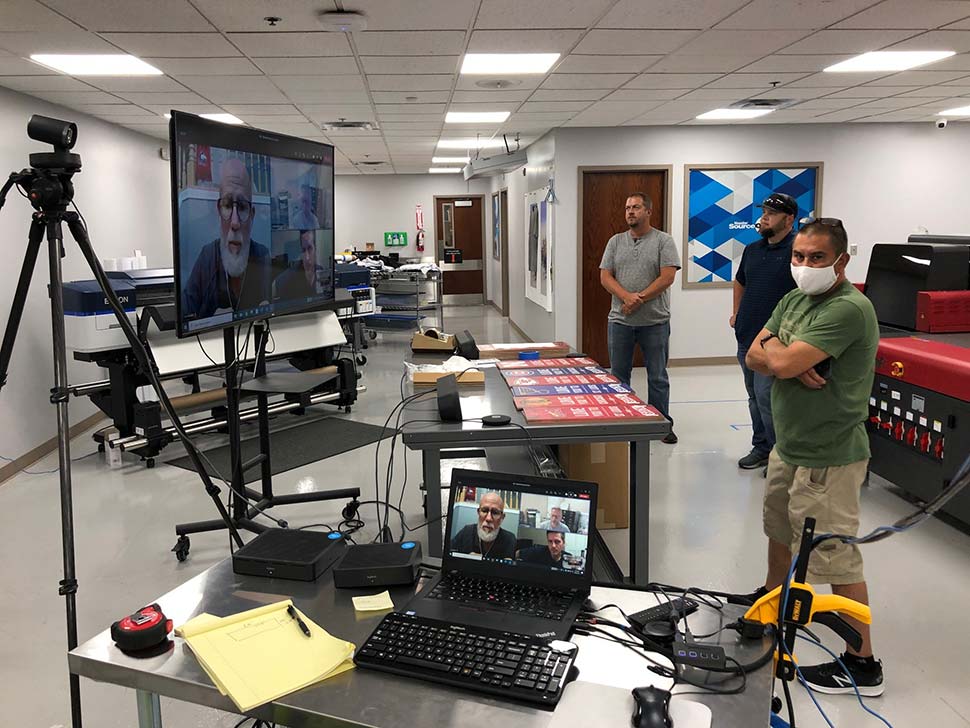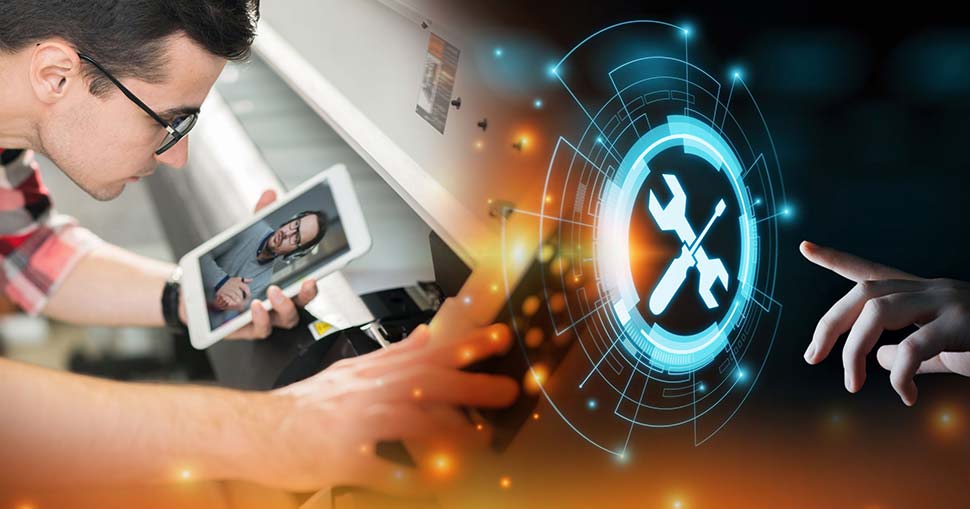Remote working is something that many of us have become used to in recent years, with the pandemic having forced staff out of the office and into working from home.
While this was only a temporary measure for most workers and many now have returned back into their traditional office environments, the experience of working remotely brought with it a host of benefits that have led some companies to adopt some form of remote service on a more full-time basis.
This is certainly true of the print industry where manufacturers and suppliers are beginning to make their technical experts available to customers remotely to offer quick, expert advice on all sorts of technical challenges.
Access support faster
Fast, almost on-demand service is one of the stand-out benefits of remote technical service. The customer has quicker access to expert support, as opposed to having to wait for that technician to travel to visit them. The speed and accessibility are mutually beneficial for the printer, the manufacturer, and the supplier, as it saves staff having to travel hundreds, or even thousands, of miles for an issue that could have been resolved much more quickly, cost-effectively, and efficiently using remote support.
At a time when almost all businesses are trying to reduce costs, this service can be hugely beneficial to all parties. The manufacturer or supplier can reduce the number of on-site visits it needs to carry out, instead providing the same service remotely, while the customer can significantly reduce any downtime due to the quick nature of the service. Furthermore, manufacturers and suppliers can benefit if seeking to reduce staff headcount without scaling back on their service offerings.
Addressing issues
In a new era of remote communications, remote support allows customers to access a range of expert advice about all issues. Take training as an example; in years gone by, this would require one or more experts traveling out to a location and spending several days on-site to carry out the training sessions.
Fast-forward to the modern day and almost all of this can be done remotely. From their own office, the technical expert can deliver sessions on a video connection, supported by videos and images if necessary, and answer any additional questions the customer may have via the two-way link with the customer.

This also applies when a customer has taken on new equipment or is looking to produce a new application type. Rather than waiting for an expert to travel to their facility to walk them through the process in person, this service can be delivered remotely, with the expert able to offer guidance much faster.
Remote service technicalities
So, what do you need to get started with this remote working method? Again, this is one of the core benefits of accessing technical support remotely – it is relatively inexpensive in terms of the type of equipment you need.
All you require is an up-to-date tablet or a company telephone capable of hosting video calls, along with a good internet connection. This way, you can easily hear and communicate with the expert on the other end of the line and see any documents and images being shared as part of the conversation.
There are a few pointers though, that are worth sharing. Firstly, you should consider your choice of a camera; make sure you invest in a camera of high enough quality for clear video calling. There are many excellent cameras out there with inexpensive price tags that will do the job nicely.
Some might want to take this a step further by installing a large screen to allow for group training sessions, connecting the screen from a mobile device via an HDMI connector.
Ideally, you want to speak with a specialist within two or three minutes of being in contact with the supplier, so ease of access is really important when setting up video calls. As such, you should ensure your staff knows how to properly use these solutions and any supporting software to ensure customers get the full experience of the remote service.
Finally, there is the issue of technology platforms; you should recognize that customers will be using a range of operating systems, so ensure you do not commit to a certain technology. For example, Apple is extremely popular, but most people globally use Android, and some Apple technology may not work on Android. Pick a software that works across both, and is relatively inexpensive or, even better, free!
Leading the way
When it comes to offering remote technical assistance, Nazdar Ink Technologies is one of the leading providers in the entire industry. In 2015 its technical support team created an email queue, as a communication tool that allows customers around the world to easily connect with experts without having to leave the comfort of their own office.
Before the pandemic hit, Nazdar identified a growing requirement for remote services and began with a simple offering via TeamViewer, a remote access and control software. TeamViewer allowed experts to solve tech issues remotely and save customers a significant amount of time.
During the pandemic, demand for this type of service significantly increased as experts could not carry out on-site visits. Nazdar built on its initial offering to ensure that its experts could continue to offer the highest level of service to customers remotely.
In addition to TeamViewer, Nazdar now uses the LifeAR augmented reality app and has invested in several specialty cameras that offer a whole new dimension to remote technical service and ensure the customer gets the best possible experience.
Nazdar’s staff are fully trained in using all of this equipment to effectively provide remote services. At the same time, the new kit also allows experts to make full use of Nazdar’s range of unique technology such as printing equipment, color control and outdoor weathering devices during the remote sessions.
All of this effort focuses on making life easier for customers, a view shared by color management, measurement, and control solutions provider X-Rite. Mark Gundlach, one of the talented trainers at X-Rite, says remote training has allowed the company to adjust schedules to better fit students’ needs.
“For example, instead of blocking out two solid days for the training, we have been able to split the sessions into four half-day sessions,” Gundlach explains. “This allows the customer’s team to keep up with other work and reduces distractions from their core responsibilities.
“Or in another case, the training firstly required a session with the quality team to establish their print quality requirements, followed by train-the-trainer sessions with selected print press team members. Instead of delivering these sessions back-to-back, remote training provided the flexibility to deliver this training in two parts, allowing the quality team to do additional work between the sessions.”
Simply put, remote technical service is as, if not more, effective as traditional, on-site visits. The new era of remote communications in which we now live means customers can access expert advice almost instantaneously and solve issues that in the past may have taken weeks to resolve.
Authored by Travis Barcelona, Inkjet Product Development Manager, Nazdar Ink Technologies; and Bruce Ridge, Director of Technical Service, Nazdar Ink Technologies
To read additional recent news from Nazdar, click here





